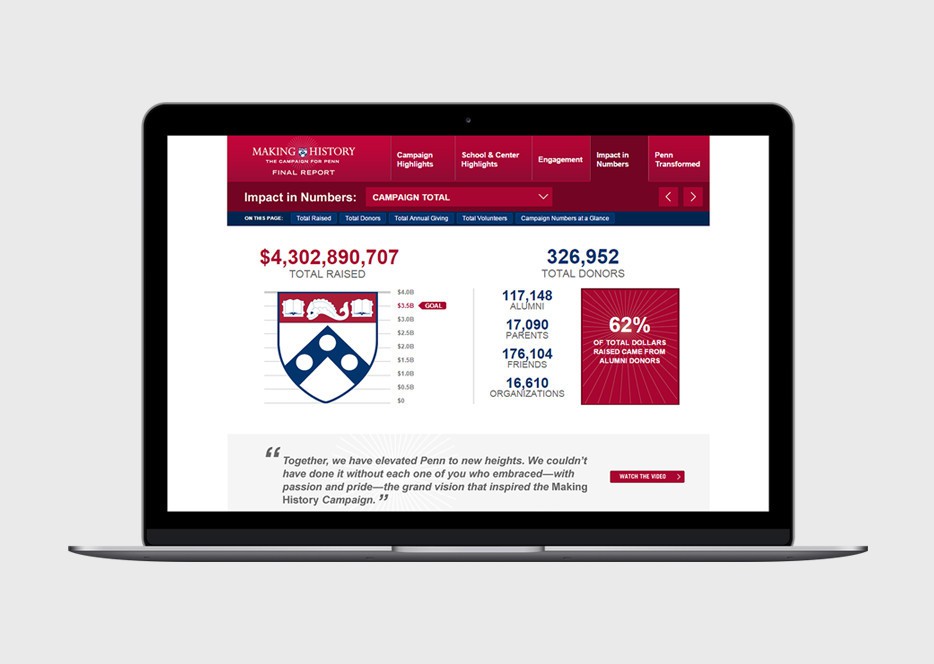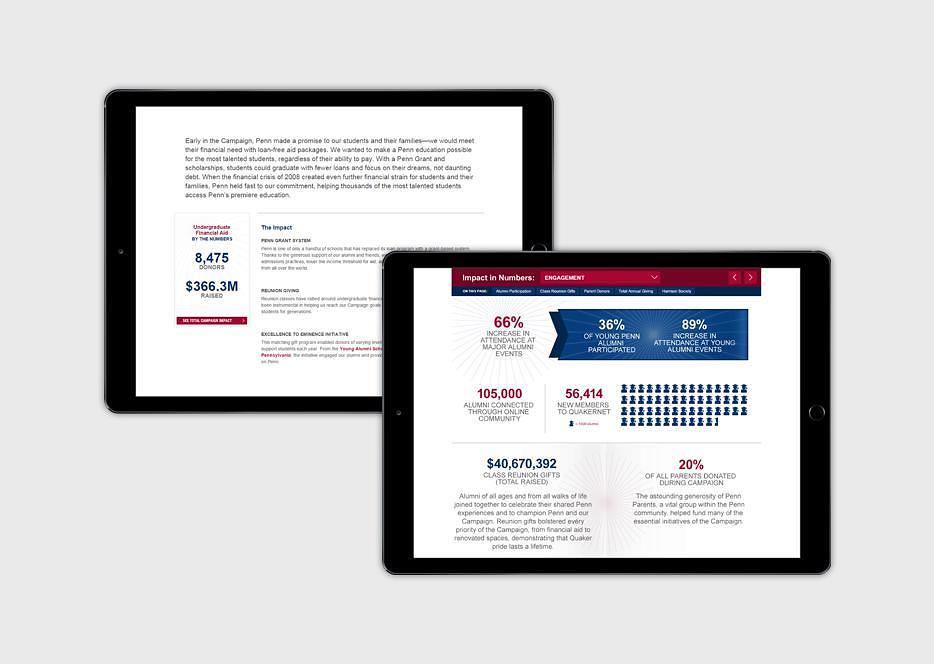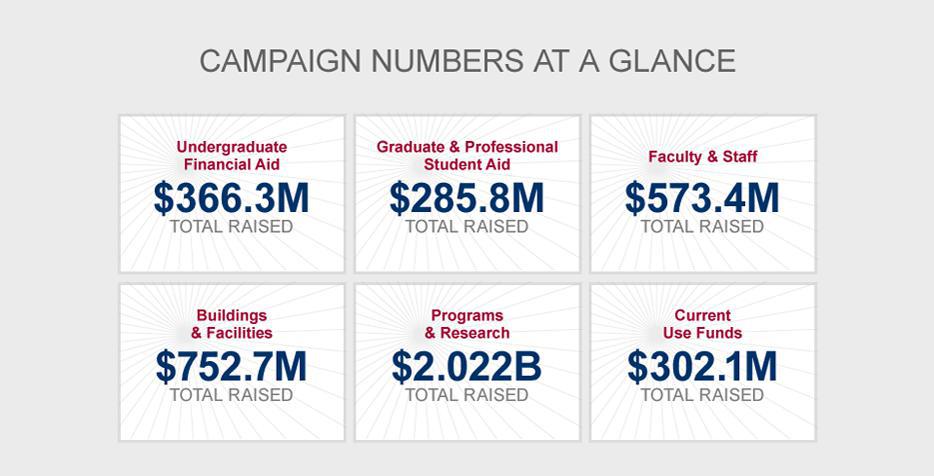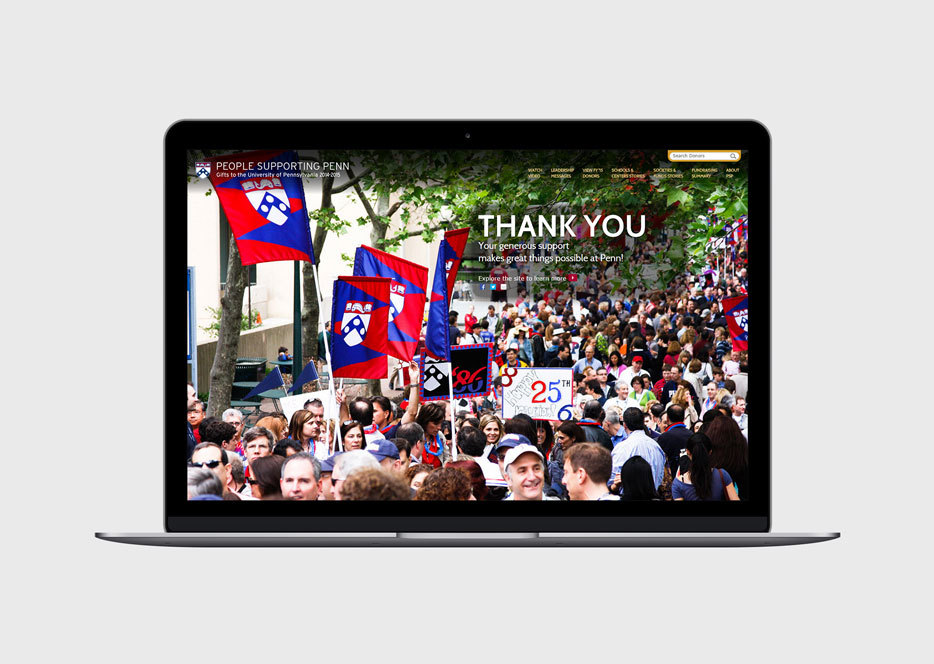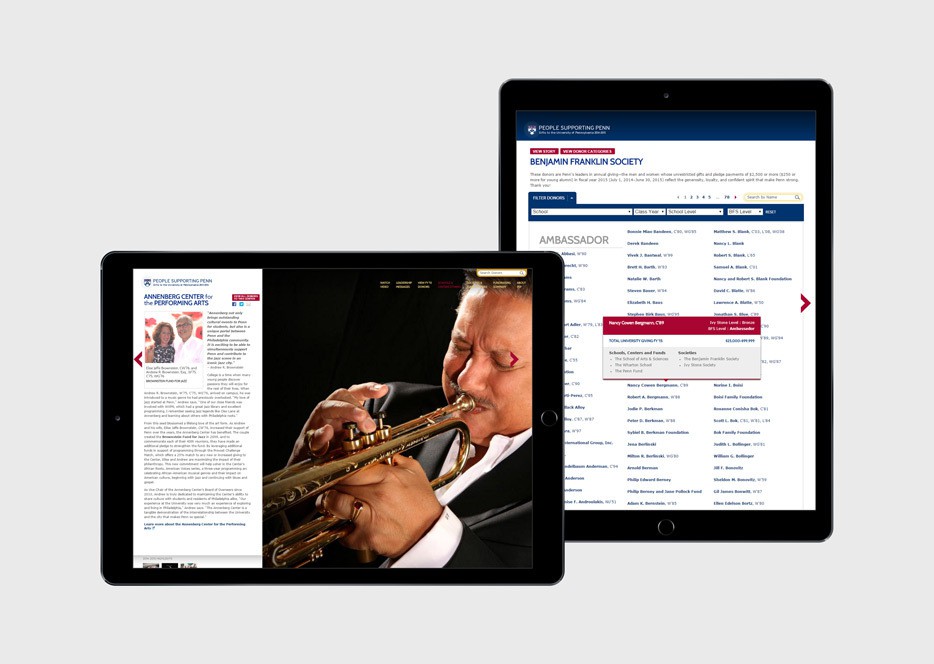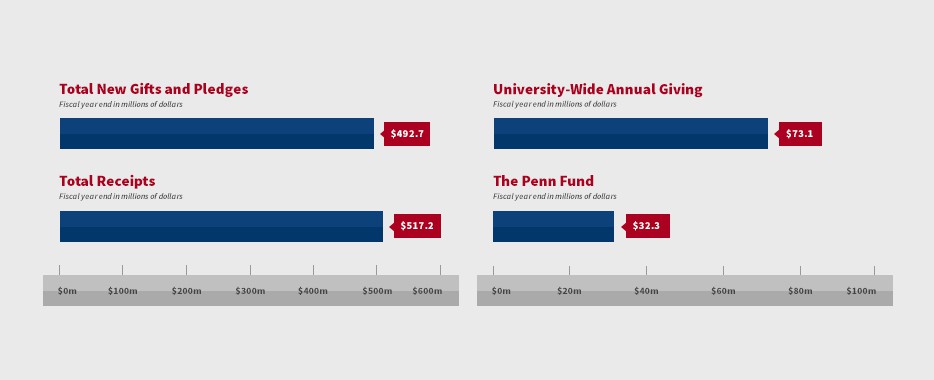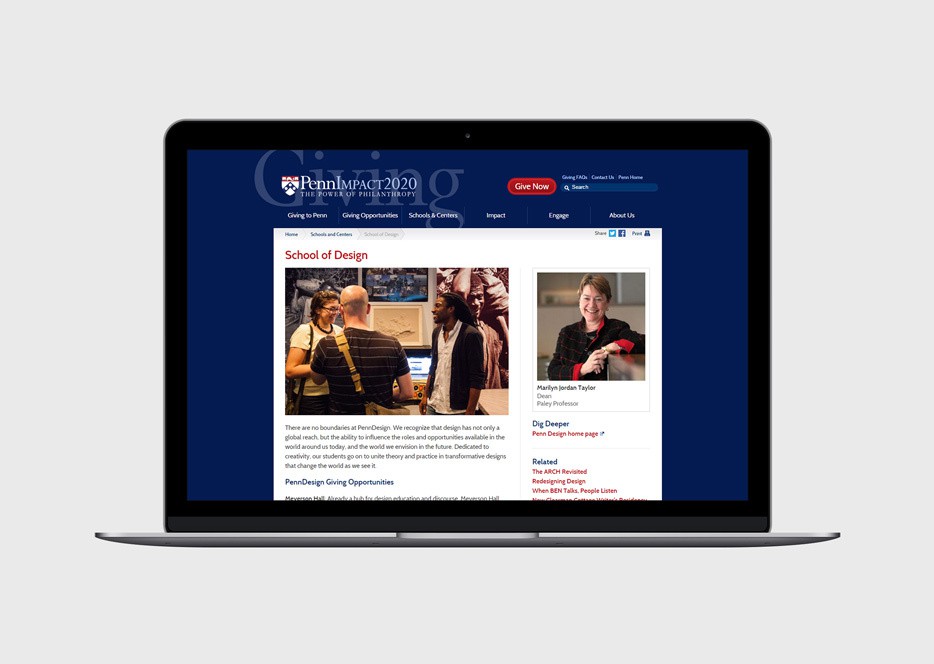Few institutions have the reach and impact of the University of Pennsylvania. Its long tradition of the pursuit of knowledge and educating future generations goes back more than 265 years.
eCity has partnered with several Penn departments and schools to drive engagement throughout multiple phases of the school’s campaigns, leading to remarkable results.
Donor Solicitation
As part of their annual campaigns, eCity has partnered with Penn Vet and Penn Nursing to solicit online donations through email campaigns, creating compelling content and building emails and landing pages built for conversion. By integrating digital outreach into their campaign strategy, these schools were able to reach more people than a typical direct mail outreach and drive down the cost to raise a dollar significantly.
Donor Engagement
Additionally, we partnered with Penn’s Office of Development and Alumni Relations of Marketing and Communications to create Penn Impact, a centralized online destination for Penn donors. The site not only provides information about school priorities and giving opportunities, but it inspires giving by allowing users to see how supporting the school actually supports issues (such as education, cancer research, going green, etc.) that resonate with the site visitor.
Donor Recognition
After completing its campaigns, Penn understands the importance of thanking and continuing to engage its donors. That’s why we built a Final Report website that reflects the achievements of Penn’s remarkable Making History campaign, a 10-year, $4.3 billion dollar success that will have a lasting impact throughout the school. The site expresses thanks for the donors, volunteers, alumni, and major achievements through videos, animated infographics, stories, and interactive maps.
Additionally, we have worked for the past several years to create People Supporting Penn, an annual recognition of people who donate to the school and the impact that those gifts allow. Rather than a printed annual report, users can now browse and filter through donors by multiple parameters, including donor name, school, class year, school level, and giving society. The interactive presentation of the donor lists provides context for the donors as they browse, and has proven to be a tool for the individual school giving centers to encourage future giving.
Each of these projects has helped Penn communicate its priorities to prospective donors and show how their gifts will be used to create a lasting impact. In turn, we are strengthening relationships with alumni and donors through public recognition and thanks, which helps forge lifelong connections.
